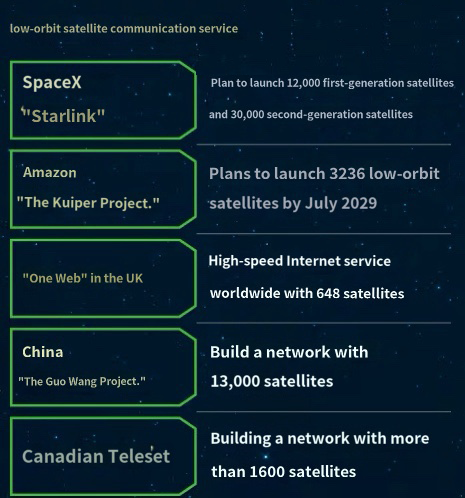
On the same day, the state-owned 太 Yuan Xinjiang Science and Technology Corporation (SSST) launched the first 18 satellites on a rocket as part of its own satellite construction project, the so-called “千帆星座” at the Taiyuan Satellite Launch Center.
The project, also known as the “G60 Starlink Plan,” began last year with the support of the Chinese government. According to Chinese media, it plans to launch 108 satellites this year and launch 648 satellites by the end of 2025 to provide global network services by the end of 2027. The plan is to build 15,000 satellites by 2030 to provide multiple integrated services such as mobile phone networks. This project means that China has entered the low-orbit satellite communication service, which is dominated by companies in advanced countries such as Starlink.
Global companies with enormous capital and technology, such as SpaceX, OneWeb, Amazon, and Telesat, are already dominating the market by providing low-orbit satellite communication services based on non-standard proprietary standards. Among them, Starlink is considered a representative success story by building a dense Internet network with more than 5,500 low-orbit clustering satellites. Analysts say that China’s full-fledged entry into the low-orbit satellite business is due to its consideration of strategic aspects such as competition and military importance between the U.S. and China in addition to commercial aspects.

In fact, Starlink is playing a big role in supplementing the Ukrainian communication network that was destroyed by Russia’s invasion in February 2022. Reuters reported that China’s People’s Liberation Army has been studying in-depth the issue of Starlink’s deployment of battlefields in Ukraine for the past two years. “This satellite launch represents an important step in terms of China’s strategic development,” the news agency said, predicting that competition among countries for low-Earth orbit, which has great military implications, is likely to become fiercer. Amid fierce strategic competition between the U.S. and China, China has previously established a “斗” system to counter the U.S. satellite positioning system.
SOPHIA KIM
US ASIA JOURNAL



